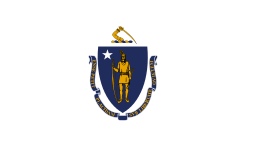Jonathan Mason (Massachusetts politician)
| Jonathan Mason | |
|---|---|
 | |
| United States Senator from Massachusetts | |
|
In office November 14, 1800 – March 4, 1803 | |
| Preceded by | Benjamin Goodhue |
| Succeeded by | John Quincy Adams |
| Member of the U.S. House of Representatives from Massachusetts's 1st district | |
|
In office March 4, 1817 – May 15, 1820 | |
| Preceded by | Artemas Ward Jr. |
| Succeeded by | Benjamin Gorham |
| Member of the Massachusetts Senate | |
|
In office 1799-1800 | |
| Member of the Massachusetts House of Representatives | |
|
In office 1786-1796 | |
| Personal details | |
| Born |
September 12, 1756 Boston, Massachusetts |
| Died |
November 1, 1831 (aged 75) Boston, Massachusetts |
| Political party | Federalist |
| Alma mater | College of New Jersey |
| Profession | Law |
Jonathan Mason (September 12, 1756 – November 1, 1831) was a Federalist United States Senator and Representative from Massachusetts during the early years of the United States.
Mason was born in Boston, Massachusetts. He attended Boston Latin School the College of New Jersey (now Princeton University), graduating in 1774. After studying law, he was admitted to the bar in 1779.
On April 13, 1779, Mason married Susannah Powell (1761–1836). They had seven children—five daughters and two sons:
- Miriam Clarke (1790–1870); married David Sears.
- Susan Powell (d.1841); married John Collins Warren on November 17, 1803.
- Anna Powell (d.1861); married Patrick Grant.[1]
- Mary Bromfield;
- Elizabeth (1784–1826); married Samuel Dunn Parker on December 12, 1807 in Boston, MA.
- Jonathan (1795–1884); married Elizabeth Cowpland(?)
- William Powell (1791–1867); married Hannah Rogers.
In 1780, Mason delivered the annual address marking the Boston Massacre.
He was a Member of the Massachusetts House of Representatives from 1786 to 1796.
Starting in 1795, Mason was a partner in the Mount Vernon Proprietors, a developer of real estate in Boston's Beacon Hill neighborhood. Around 1800 he built a mansion for himself on Mt. Vernon Street, in which he lived through the end of his life. Around 1804 he hired architect Charles Bulfinch to design 4 houses, also on Mt. Vernon Street, for each of his daughters; the 4 houses still stand today.[2]
Mason was also a member of the South Boston Association, which developed real estate in Dorchester.
From 1797 to 1798, he served with the Massachusetts Governor's Council and was elected for the following two years, and was in the Massachusetts Senate from 1799 to 1800. Following the resignation of Senator Benjamin Goodhue, he was elected to the U.S. Senate, where he served from November 14, 1800 to March 4, 1803. He then resumed his law practice and served again in the Massachusetts Senate from 1803 to 1804 and the Massachusetts House from 1805 to 1808.
His portrait was painted by Gilbert Stuart in 1805.[3]
He served again in the US House of Representatives from March 4, 1817, to May 15, 1820, whereupon he resigned to pursue his law practice. He died in Boston, at age 75.[4] He is interred in Mount Auburn Cemetery in Cambridge, Massachusetts.[5][6]
References
- ↑ Museum of Fine Arts, Boston Portrait of Anna by Gilbert Stuart.
- ↑ Dictionary of American biography.
- ↑ George Mason. Life and works of Gilbert Stuart.
- ↑ Biographical dictionary of America.
- ↑ Political Graveyard.
- ↑ United States Congress. "Jonathan Mason (id: M000221)". Biographical Directory of the United States Congress.
Further reading
- Obituary. Columbian Centinel, November 6, 1831.
- Mary Caroline Crawford. Famous families of Massachusetts. 1930.
| United States Senate | ||
|---|---|---|
| Preceded by Benjamin Goodhue |
U.S. Senator (Class 1) from Massachusetts 1800 – 1803 Served alongside: Dwight Foster |
Succeeded by John Quincy Adams |
| United States House of Representatives | ||
| Preceded by Artemas Ward, Jr. |
Member of the U.S. House of Representatives from Massachusetts's 1st congressional district March 4, 1817 – May 15, 1820 |
Succeeded by Benjamin Gorham |


